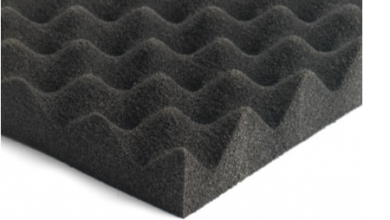How to Run a Google Ads Campaign for Your Local Business

If you want to have successful Google Ads campaigns that drive customers to your door, you’re in the right place. According to Google, you can earn around $2 per $1 you spend on Google Ads when you do it right.
In this article, you’ll find more info below about strategies that work. Follow them closely, and you’ll avoid the most common mistakes in your Ad campaigns.
Understand the Basics Before You Launch
It’s essential to know what you’re working with and what could go wrong if you don’t prepare properly.
What is Google Ads and How Does It Work?
Google Ads is a pay-per-click (PPC) advertising platform where you bid on keywords relevant to your products or services. Your ad appears in search results or across Google’s display network when someone searches for those terms. Placement is determined by an auction system that considers your bid and Quality Score, a rating based on:
- Ad relevance
- Expected click-through rate
- Landing page experience
Why Businesses Succeed or Fail in Google Ads?
The difference between profitable campaigns and wasted budgets often comes down to targeting accuracy, ad quality, and landing page performance.
Poor targeting means paying for clicks from people who will never buy. Weak ad copy leads to low click-through rates. Meanwhile, a slow, irrelevant landing page will destroy your conversion rate. In extreme cases, click fraud, where competitors or bots click your ads, can eat away at your budget.
Set Your Objectives
Running a campaign without defined goals is like driving without a destination. Decide whether your focus is generating sales, capturing leads, or building brand awareness. Each requires a different setup, bidding strategy, and measurement plan.
Master Your Keyword Research
Obtaining the right keywords is one of the most important steps in creating a profitable campaign.
Understand the Various Match Types
Google Ads offers four keyword match types: Broad Match, Broad Match Modifier (now incorporated into Phrase Match), Phrase Match, and Exact Match. Broad reaches more people but is less targeted. Exact is highly targeted but has a smaller reach. Negative keywords are equally important. They stop your ads from showing for irrelevant searches.
Use Keyword Research Tools
Tools, such as Google Keyword Planner, can find words with the right mix of search volume, competition, and intent. Find the search terms that local customers are using.
Leverage Long-Tail Keywords for Better Conversion
Long-tail keywords bring in higher-quality traffic because the searcher is closer to making a decision. For instance, you can use “emergency plumber in Dallas” instead of the generic keyword “plumber.”
Implement Negative Keywords to Cut Waste
Regularly add irrelevant search terms to your negative keyword list. This is one of the easiest ways to save budget and improve ROI.
Craft High-Performing Ad Copy
A strong ad copy should grab attention while motivating people to click.
Elements of a Winning Google Ad
A good ad has a clear, benefit-focused headline, a relevant description that addresses the searcher’s needs, and a display URL that reassures them they’re in the right place.
Writing Compelling CTAs That Drive Clicks
Use direct, action-oriented calls to action like “Book Your Free Estimate” or “Call for Same-Day Service.” Avoid vague CTAs such as “Learn More.”
A/B Testing Different Versions of Ads
Test variations of headlines, descriptions, and CTAs to see which combinations produce the best results. Keep the winning elements and replace the underperforming ones.
Optimize Landing Pages to Boost Your Conversions
Your landing page determines whether a click turns into a lead or sale.
Why Landing Pages Can Make or Break Your Campaign
Even the best ad can’t save a slow-loading, irrelevant, or confusing landing page. A poor landing page experience can hurt your Quality Score, making clicks more expensive.
Elements of a High-Converting Landing Page
Keep your messaging consistent with your ad. Use a clear headline, a strong offer, trust signals such as testimonials or reviews, and a single, strong CTA. Make sure the page is mobile-friendly, as most local searches happen on mobile devices.
Avoid the Top Landing Page Mistakes
Avoid sending traffic to your homepage, cramming too much information above the fold, or using a design that distracts from your offer.
Structure and Organize Your Campaigns
A well-structured account makes it easier to manage, optimize, and scale your campaigns.
Campaign vs. Ad Groups
Your campaign may contain ad groups, which are collections of ads targeting specific keywords. Keep your themes tight within each ad group for higher relevance.
Structure Your Campaigns for Better Quality Score
Group similar keywords together so you can write highly relevant ad copy for each. This improves your Quality Score and lowers your cost per click.
Geo-targeting and Device Targeting Strategies
You should narrow your targeting to specific areas you actually serve. Consider adjusting your bids for mobile devices if most of your customers convert via phone calls.
Smart Bidding and Budget Strategies
The way you bid can significantly affect your campaign performance.
Choose the Right Bidding Strategy
If you’re focused on traffic, manual CPC can give you control. For leads or sales, automated strategies such as Target CPA or Target ROAS can work well once you have enough conversion data.
Set Daily Budgets
Start with a budget you can comfortably test over 30 days. Avoid making big changes too quickly. Google’s algorithms need time to learn.
When to Use Automated vs. Manual Bidding
Use manual bidding when you need precise control, and automated bidding when you want Google to optimize for conversions at scale.
Read Also: How to Elevate Your House Parties with Fizz-Based Mocktails
Tracking, Measuring, and Improving Performance
If you’re not tracking results, you’re guessing.
Set Up Your Conversion Tracking
Install Google Ads conversion tracking or integrate with Google Analytics to see which keywords, ads, and campaigns drive results.
Learn About Your Key Metrics
Monitor your:
- Click-through rate (CTR)
- Cost per click (CPC)
- Quality Score
- Conversion rate
A low CTR could mean weak ad copy, while a high CPC may indicate strong competition.
Based on Your Decisions on Solid Data
Regularly review your campaign’s performance reports and make adjustments based on what’s working and what isn’t. Instead of relying on assumptions, let the numbers guide you.
Avoid These Costly Google Ads Mistakes
These common mistakes can drain your budget fast.
Overlooking Negative Keywords
Failing to update your negative keyword list will cause you to keep paying for irrelevant clicks.
Sending Traffic to the Wrong Page
Avoid sending ad traffic to a generic homepage. Always use a dedicated, relevant landing page for each ad group.
Not Testing Enough Variations
Without testing, you’ll never know if there’s a headline, offer, or CTA that could double your results.
Conclusion
Running a profitable Google Ads campaign for your local business needs more than luck. It’s about planning, precision, and persistence. Your platform should target the right keywords, write ads that convert, and optimize your landing pages. You also need to structure your campaigns with the right bidding strategy. Moreover, you must also track your performance and avoid costly mistakes to consistently generate leads and sales without overspending






